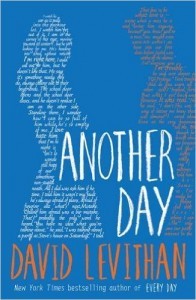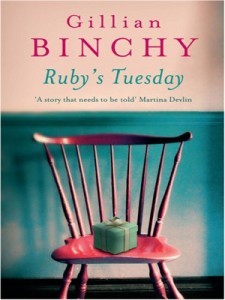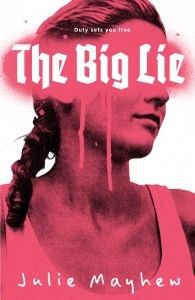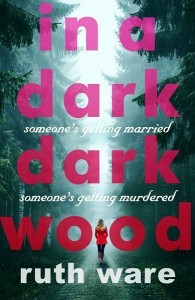Claire Hennessy's Blog, page 20
October 5, 2015
Recent bits ‘n’ pieces
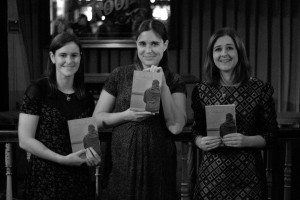
Banshees launching (Liquor Rooms, Dublin | 29 September)
Some recent things:
Delighted to have my story ‘Small Rebellions’ in the gorgeous journal Long Story, Short this month
Also very pleased to have my story ‘Screen‘ in Numéro Cinq ‘s Uimhir a Cúig section this month
I did some recapping of panels at the CBI conference for the Irish Times, including the YA panel and the spoken word/poetry session
Louise O’Neill’s Asking for It is the IT Book Club choice this month; I wrote about it in the context of YA fiction tackling rape
Banshee launched in Dublin: we have photos!
And upcoming events:
October 15th: YA panel discussion at 6pm, Hodges Figgis, with Ruth Long, Dave Rudden & Louise O’Neill
October 17th/18th: Writing Teen Fiction workshop at Dalkey Creates
October 23rd/24th: chairing panels at Dept Con 1
Finally, as ever, I’m teaching at the Big Smoke Writing Factory regularly: check out upcoming creative writing classes here.
October 4, 2015
Book review: The Rest Of Us Just Live Here
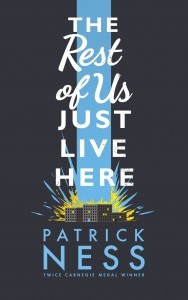 Patrick Ness – The Rest of Us Just Live Here
Patrick Ness – The Rest of Us Just Live Here
Mike lives in a small American town like many others, grappling with normal teenage issues – will my dad ever stop drinking? Is my mom serious about running for political office? Is my older sister going to be okay as she continues recovering from her eating disorder? What’s my younger sister going to do when we leave for college? Will this girl ever love me? What will I do without my best friend nearby – the one person who knows how to help with my OCD loops?
So he’s got quite enough to deal with. But there are also the ‘indie kids’ – you know the ones. The ones with weird names, the ones who never seem to use the internet, the ones who are somehow always involved in whatever latest supernatural crisis is going on. Every few years, there’s something – and the adults just don’t talk about it. This time around, there are glowing blue eyes and indie kids dying or going missing – but Mike’s learned not to get involved.
This is a weird book in many ways – set in an incredibly urban-fantasy environment but rarely engaging with it, and sometimes that can feel frustrating for a reader. The opening of every chapter details what’s happening in the big save-the-world plot – featuring characters and storylines we only catch glimpses of as Mike and his friends just try to survive high school. I adored the premise of it, but wanted perhaps just a little bit more of the two worlds hitting off one another – not quite Buffy‘s ‘The Zeppo’, in which the ‘regular guy’ saves the day, but a few more interactions to remind us that these are teens who do live in a world that is not actually our own.
I also (spoiler alert) felt a little iffy about the handling of mental illness in the book: it’s generally done quite well, but then finishes with Mike rejecting the option of being ‘cured’ by a friend with new god-like powers, because conquering mental illness is about Character and Strength (whereas conquering physical illness is about Taking The Cure). It left me a little unsettled. But I did enjoy reading it, and the chapter-openers were marvellously snarky, and Mike’s voice is brilliantly teenage. One to read, but also to discuss.
September 26, 2015
Banshee launching!

Banshee Issue #1 – so, that happened.
So! About a year ago my lovely and clever friend Laura says to me on twitter (we are children of the internet), she says, hey, we should have our own literary journal.
Our super-talented friend Eimear joins in and pretty soon we’re creating GoogleDocs and swapping ideas and coming up with titles.
I can’t quite explain why it wasn’t one of those things that you talk and talk about and that never happens, but it wasn’t. The three of us have thrown around arts-related ideas before. They seemed like ‘one day’ aspirations rather than ‘today’ tasks, maybes rather than possibilities. This was different.
Issue #1 of Banshee, the baby with three mammies, launched in Cork on Thursday 24th September as part of the Cork International Short Story Festival. When our readers read (a mix of newcomers and familiar names in Irish literary circles), or when my co-editors spoke, I actually got chills. We made a thing, guys.
Our Dublin launch is next week – Tuesday 29th September. All are welcome.
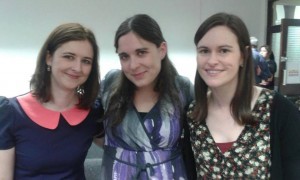
From l-r – Laura Jane Cassidy, yours truly, and Eimear Ryan, at the Banshee launch at the Cork International Short Story Festival
The three of us are all writers and shockingly realistic about the terribly niche business that is setting up a literary journal, so it’s been sort of ridiculously brilliant to have been featured in things like articles about the Irish literary journal or to be asked to comment on sexism in publishing. It’s been astonishing to see people on twitter post pics of the journal as it arrives in their inbox, and – this is loveliest of all – to see writers reach out to their fellow contributors to compliment them on their work.
Do join us for the Dublin launch and/or note that our submissions window for Issue #2 (Spring 2016) is open in October. To steal blatantly from our Issue #1 editorial, we love-love-love
that particular thrill of an inbox filled with promise. You open up a submission and read something that a brain and keyboard have made with words, and with the best work comes a rush of excitement. This is good, you think; this is something people need to read.
Send us things. Pick up a copy of Issue #1. Or come along on Tuesday and watch us go, whoa, so that happened – and to marvel at the incredible work that landed in our inbox that we are so delighted, and so honoured, to be publishing this autumn.
September 25, 2015
Book review: This Is Where It Ends
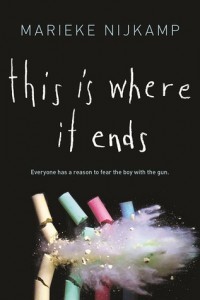 Marieke Nijkamp – This Is Where It Ends
Marieke Nijkamp – This Is Where It Ends
Fifty-four minutes. That’s how long it takes for Tyler’s rampage throughout the school – first in a locked school assembly, then in the corridors – to begin and end. Meanwhile, a series of narrators fill us in on what’s happening: Tyler’s ex girlfriend, Claire, is practicing with the track team at the time the shots go off. Her younger brother is in the auditorium. She has to find out what’s going on. Autumn, Tyler’s sister, can’t believe what’s happening, but knows that she’s already lost her brother; he’s told their father she’s been dancing again, something he associates with their dead mother and hates her doing. Sylv, Autumn’s girlfriend, has been scared of Tyler long before he brought a gun to school. And her twin, Tomas, is in the principal’s office with his friend Fareed, in trouble yet again, when the first shots go off – and they’re determined to do what they can to help get the students out, even though the police have told them to protect themselves.
Alongside the rotating narrators we get snippets of what’s happening with social media, including a blog from a beloved teacher’s daughter, and tweets from students both in and out of school, as well as idiotic responses from journalists and internet trolls. This is a school shooting as it might well play out, and despite attempts at heroism on the parts of some of the characters, ultimately this is not a day with a happy ending. This is a day where an angry boy has taken a gun to school to punish people.
This is a difficult read: it’s such an accurate depiction of senseless violence. It is sad. It is intense. Out in early 2016.
Thanks to Edelweiss for the review copy.
September 22, 2015
Book review: Another Day
I adore David Levithan’s work. He writes gorgeous prose about teenagers dealing with love and other disasters, and offers up optimism and hope alongside acknowledgement of the hardness of life. In this book, the companion to Every Day, we see what it’s like to be a girl stuck in a relationship that isn’t obviously abusive but isn’t healthy, a girl who wants and needs love and support but isn’t getting it, and what happens one day when her boyfriend’s body is taken over by someone else: A.
A shifts bodies daily, never knowing whether they’re going to be male or female, black or white, gay or straight, able-bodied or disabled, or a whole range of other things. A has a unique take on the world: but is it possible to love someone just for their mind and not the body they’ve wound up in that day? And is it even fair to the people whose bodies A inhabits to try to make a connection last?
This book invites the reader to think about love, and identity, and souls, and to ponder how much of attraction is to do with the physical body. However, Every Day did all that as well, and Another Day, while a great read, doesn’t feel sufficiently different: this is territory we’ve visited before, and getting Rhiannon’s take on it doesn’t offer up anything particularly new, except perhaps at the very end. We empathised with Rhiannon in the first book, and could imagine things through her eyes; there isn’t much more than we get from the same events related to us in her voice. The opportunity to address issues around the female body isn’t really taken, either, and Rhiannon’s comfort level with A taking over her body for a day doesn’t quite ring true. I would suggest reading one or the other, rather than both: they ask many of the same questions but not enough different ones.
(There is a sequel about A coming soon, which will be interesting…)
September 20, 2015
Banshee on air
Here’s me talking on Dublin City FM’s The Book Club about Banshee, a new literary journal which you can order the first issue of now. Launching Tues Sept 29th.
September 17, 2015
#YAieDay
Two Irish-based YA-themed events to watch out for next month:
1) #YAieDay (Saturday October 3rd), an online day of twitter chats featuring writers and editors discussing all kinds of topics, from writing routines to absent parents and food in literature.
2) DeptCon (Friday/Saturday October 23rd/24th), the first Irish YA convention, taking place in Smock Alley, and featuring a bunch of Irish and UK YAers talking about everything you wanted to know but were afraid to ask.
September 16, 2015
Book review: Ruby’s Tuesday
Gillian Binchy – Ruby’s Tuesday
Afric’s husband Luke is away on business when she goes for the routine ultrasound – the one that reveals her unborn child is incompatible with life. Quickly, quietly, she arranges the visit to Liverpool to have the baby delivered now, rather than carry her to full term. For Afric, this ‘fatal foetal abnormalities’ situation – a phrase we hear in the Irish media more than we should, a phrase that shouldn’t need to be politicised but is – is still her daughter, who she names Ruby, and who she shares thoughts and memories with throughout the book.
This is a sad book but also veers towards the cliche at times: a lot of the dialogue feels greeting-cards-ish rather than authentic, particularly between Afric and Luke. The stories Afric relates to Ruby are a little too detailed to feel like dialogue, and I wondered whether addressing the entire novel to Ruby might have worked better. I also wasn’t sure about the organisation of the material – the book begins after the events and then never returns to that point, and it feels a little unfinished.
But. But there is a chapter towards the end, which I believe is based on a real event that prompted writing this story, and it’s utterly amazing. Afric has received a text letting her know her daughter’s remains have been delivered, but they haven’t, so she drives off to a depot, distressed and heartbroken, and ends up on the phone to the delivery man, Michael, who she blurts out the whole story to. That marked-fragile package he has next to him in the front seat is her daughter’s remains. And his response is pitch-perfect: he’s no idea what to say, but he’s so sorry, and it’s salt-of-the-earth Dublin talking to this middle-class lady, and it leaps off the page. And then Afric imagines him later that day, maybe telling the lads in the pub. Maybe telling the wife. Because the wife will know – the wife will explain to him why she had to travel to England to deal with the situation. It’s an incredibly powerful piece of writing, and for me the strongest, most striking part of the whole novel.
September 13, 2015
Book review: The Big Lie
Julie Mayhew – The Big Lie
Jessika is a good girl, one who follows the rules and questions nothing: until her best friend Clementine gets into trouble. Until she gets involved with her schoolfriend, GG, who wants to be kissed, unlike Clem. Until she begins to realise that the world she inhabits isn’t as truthful and right as she has been led to believe.
This is a compelling and believable look at what would have happened if the Nazis had won the Second World War – a concept that’s been explored over and over in fiction, but not typically from the perspective of young women. Jessika lives in a Britain which is part of the Greater German Reich, in a world where most of the things we know – the internet, smartphones, questionable fashion sense – exist, but are unfamiliar to this isolated empire. History is taught by the victors, so we learn of how dangerous Churchill was, and how important it was that Britain be liberated by the Nazis in the 1940s. At times this reminded me of Elizabeth Wein’s Rose Under Fire, a novel which deals with imprisonment in a women’s-only concentration camp, and at others it echoes tales of growing up under more recent totalitarian regimes. How does one rebel in this kind of society without becoming a martyr? How do you even start to unpick the lies that have been woven into your consciousness for as long as you can remember – not just by the state, but by your own family?
This thought-provoking page-turner is one to add to the to-read lists – for both teens and adults.
September 11, 2015
Book review: In A Dark, Dark Wood
Ruth Ware – In A Dark, Dark Wood
There is perhaps something a bit too familiar about the setting of this debut thriller: a big house next to a forest, far away from the rest of civilisation. A weekend where friends gather and something unsettling is about to happen. What sets this apart is that it’s a hen party, and the juxtaposition of pink fluffy boas with this kind of darkness is quite delightful indeed.
Nora hasn’t set eyes on her former best friend Clare in ten years, but when she’s invited to her hen party, curiosity gets the better of her – and the other friend from school she’s kept in touch with has agreed to go too. It doesn’t take long before she discovers who Clare’s marrying: Nora’s old boyfriend James, who she hasn’t been able to entirely forget and who is the main reason she left town at sixteen. The circumstances around this breakup prove to be less unusual than they might have been, and I would have loved to see more of their teenage selves throughout the book. Nevertheless, the uncertainty over what actually happens on the last night of the hen – a night that leaves at least one person dead and Nora in hospital trying to piece together what exactly happened – does propel the story along for most of the book.
There are some nitpicks I have about this book: Nora seems far too aware of how much she owes a girl who befriended her at age five, despite never having been in the position of not having a friend; the characters all seem far too ‘together’ for people in their mid-to-late twenties; the characterisation of Clare boils down to ‘sociopath’; there’s a ouija board. It didn’t surprise me enough (and I don’t read enough thrillers to be jaded about the genre). But I still enjoyed it a lot; the hen party awfulness is absolutely spot-on and the interactions between the attendees (including a snarky doctor and an utterly hyper maid of honour) works wonderfully.

